Christmas in the Orchard at Bend of the River
I’m walking through the orchard, basket in hand, trying to find the jaboticaba tree.
My sister Justy had asked me earlier in the day if I’d join her in picking the shiny black fruits, otherwise known as Brazilian tree grapes, before the birds beat us to them.
It’s mid-afternoon and the sun is high in the sky. I’ve put on jeans, covered shoes and long-sleeved shirt to protect me from the mosquitoes which hover around the trees, though thankfully there are few around at this time of day.
Justy tells me there at least 10 jaboticaba trees (Myrciaria cauliflora) in the orchard, most of which still have unripe green fruit clinging to them.
I remember how astonished I was a few years ago when I first saw the ripe jaboticabas.
They reminded me of small bright purplish-black baubles clinging to the trunk and branches. I’d never seen anything like them.
My sister had brought along a large plastic sheet which she laid out under the tree.
“It’s easier if we swipe them off and let them fall to the ground,” she said. “A bit like shaking an olive tree and letting the olives drop off.
“Have a taste,” she says, handing me one.
“My Brazilian friend, Flavia, loves to eat them fresh or make jam or jelly with them.
“Could be good with the Christmas ham,” she adds. “Something different from cranberry jelly.”
I pop one in my mouth and bite through the firm tannic skin which bursts open exuding a sweetish grape-like flavour.
Whenever I visit Bend of the River, the family farm in Tally Valley, south-east Queensland, I head straight for the orchard.
Over the past 30 years, my mother has planted over 120 exotic tropical and native fruit trees on the hill sloping down to the river, and it’s now my sister’s job to tend and look after them.
At this time of the year, it’s not just the jaboticabas which are laden with fruit and need to be picked.
Large green black sapotes (Diospyros digyna), aka chocolate pudding fruit, are also ready. Unlike jaboticabas, they can’t be eaten straight from the tree and need to be left until soft so that we can scrape out their dark black flesh. Originally from Mexico, they grow to the size of a large apple (about 700g-900g) on large leafy green trees and remind me of persimmons in shape.
I first tasted black sapotes many years ago at Karnak, actor Diane Cilento’s spectacular property in far northern Queensland.
I’ll never forget seeing her up one of the trees throwing the unripe green fruit down to her Sufi students.
It was Diane who showed me how to cut the fruit in half around the centre, scoop out the flesh and remove the seeds. She then mixed the dark flesh with vanilla ice cream and a splash of white rum (Kahlua and Tia Maria are also good additions).
“A truly delicious and simple chocolate pudding!” she exclaimed.
“Or you can mash the flesh, and add yoghurt and honey. Good for breakfast or dessert.”
Justy has researched numerous ways to use this abundant fruit and makes a terrific Black Sapote Cake with choc chips.
This year she’s made a Black Sapote Plum Pudding for the family Christmas. It was a real hit last year.
And what could be more festive than bowls of grumichama (eugenia brasiliensis) and acerola (Malpighia emarginata) cherries in the middle of the table? Both are tropical equivalents of the cherry and grow abundantly in the orchard and along the driveway.
I love the look of the grumichamas which are purplish-black in colour and about 2cm diameter. They also remind me of Christmas baubles. Like the jaboticabas, the flesh is white and they are good eaten fresh, but also highly prized for jams and jellies.
The acerolas, also known as Barbados cherries, are bright red with a tangy-tart flavour. I remember my mouth puckering the first time I tasted one.
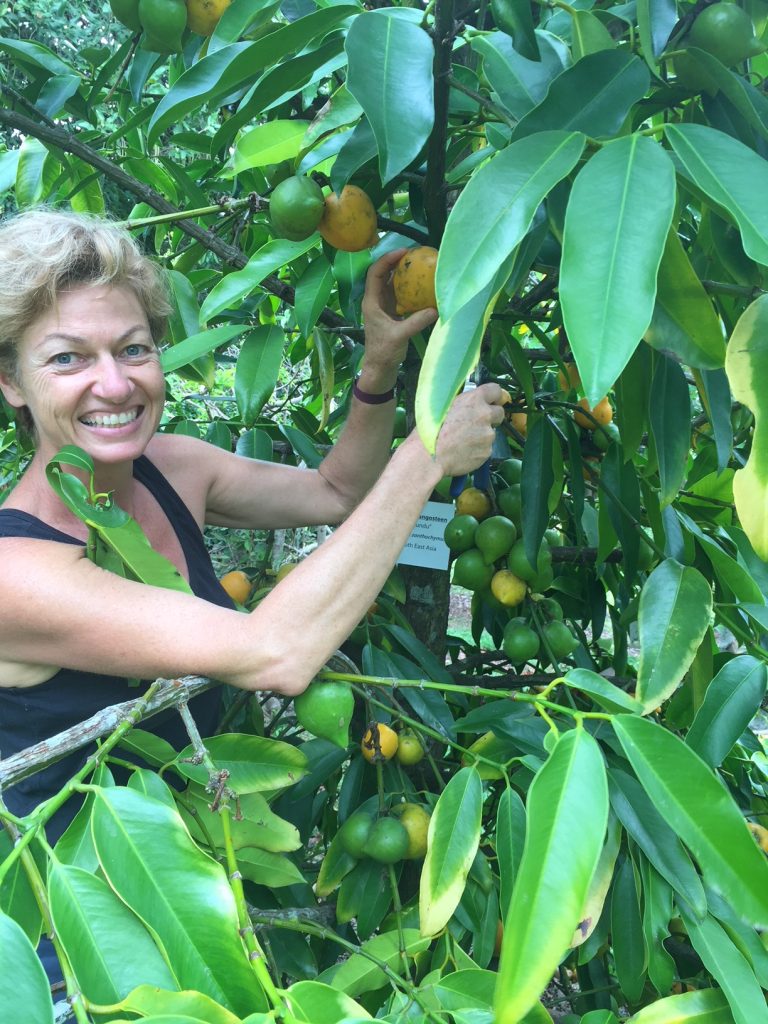 I experienced a similar sensation with the Yellow mangosteens (garcinia zanthochymus) which are sour in taste with an astringent skin (not to be confused with the sweet, dark purple-skinned garcinia mangostanaarcinia).
Add some sugar, though, and their flavour is fabulous.
Recently Justy made a Yellow Mangosteen Cheesecake for some Japanese guests and they loved it. That, too, may grace this year’s Christmas table.
Wandering through the orchards are gaggles of geese, clutches of chickens and ostentations of peacocks. The chooks lay pale blue, cream and brown eggs each day which are used in cakes, puddings, frittatas, scrambled eggs and omelettes.
At this time of the year, the peacocks are busy shaking their iridescent fans at the peahens while the guinea fowl run around chattering and letting out the odd scream. Early morning at the farm is a barnyard chorus, especially when the geese are being fed.
One year my mother ordered 300 goslings with the intention of fattening them up and selling them for Christmas. Neighbours complained of the noise they made and she sold most of them long before the festive season arrived, retaining about 30 for the farm.
She adores them. My sister’s pretty keen on them too.
I doubt roast goose will ever make it onto the family Christmas table.
I experienced a similar sensation with the Yellow mangosteens (garcinia zanthochymus) which are sour in taste with an astringent skin (not to be confused with the sweet, dark purple-skinned garcinia mangostanaarcinia).
Add some sugar, though, and their flavour is fabulous.
Recently Justy made a Yellow Mangosteen Cheesecake for some Japanese guests and they loved it. That, too, may grace this year’s Christmas table.
Wandering through the orchards are gaggles of geese, clutches of chickens and ostentations of peacocks. The chooks lay pale blue, cream and brown eggs each day which are used in cakes, puddings, frittatas, scrambled eggs and omelettes.
At this time of the year, the peacocks are busy shaking their iridescent fans at the peahens while the guinea fowl run around chattering and letting out the odd scream. Early morning at the farm is a barnyard chorus, especially when the geese are being fed.
One year my mother ordered 300 goslings with the intention of fattening them up and selling them for Christmas. Neighbours complained of the noise they made and she sold most of them long before the festive season arrived, retaining about 30 for the farm.
She adores them. My sister’s pretty keen on them too.
I doubt roast goose will ever make it onto the family Christmas table.
 I experienced a similar sensation with the Yellow mangosteens (garcinia zanthochymus) which are sour in taste with an astringent skin (not to be confused with the sweet, dark purple-skinned garcinia mangostanaarcinia).
Add some sugar, though, and their flavour is fabulous.
Recently Justy made a Yellow Mangosteen Cheesecake for some Japanese guests and they loved it. That, too, may grace this year’s Christmas table.
Wandering through the orchards are gaggles of geese, clutches of chickens and ostentations of peacocks. The chooks lay pale blue, cream and brown eggs each day which are used in cakes, puddings, frittatas, scrambled eggs and omelettes.
At this time of the year, the peacocks are busy shaking their iridescent fans at the peahens while the guinea fowl run around chattering and letting out the odd scream. Early morning at the farm is a barnyard chorus, especially when the geese are being fed.
One year my mother ordered 300 goslings with the intention of fattening them up and selling them for Christmas. Neighbours complained of the noise they made and she sold most of them long before the festive season arrived, retaining about 30 for the farm.
She adores them. My sister’s pretty keen on them too.
I doubt roast goose will ever make it onto the family Christmas table.
I experienced a similar sensation with the Yellow mangosteens (garcinia zanthochymus) which are sour in taste with an astringent skin (not to be confused with the sweet, dark purple-skinned garcinia mangostanaarcinia).
Add some sugar, though, and their flavour is fabulous.
Recently Justy made a Yellow Mangosteen Cheesecake for some Japanese guests and they loved it. That, too, may grace this year’s Christmas table.
Wandering through the orchards are gaggles of geese, clutches of chickens and ostentations of peacocks. The chooks lay pale blue, cream and brown eggs each day which are used in cakes, puddings, frittatas, scrambled eggs and omelettes.
At this time of the year, the peacocks are busy shaking their iridescent fans at the peahens while the guinea fowl run around chattering and letting out the odd scream. Early morning at the farm is a barnyard chorus, especially when the geese are being fed.
One year my mother ordered 300 goslings with the intention of fattening them up and selling them for Christmas. Neighbours complained of the noise they made and she sold most of them long before the festive season arrived, retaining about 30 for the farm.
She adores them. My sister’s pretty keen on them too.
I doubt roast goose will ever make it onto the family Christmas table.

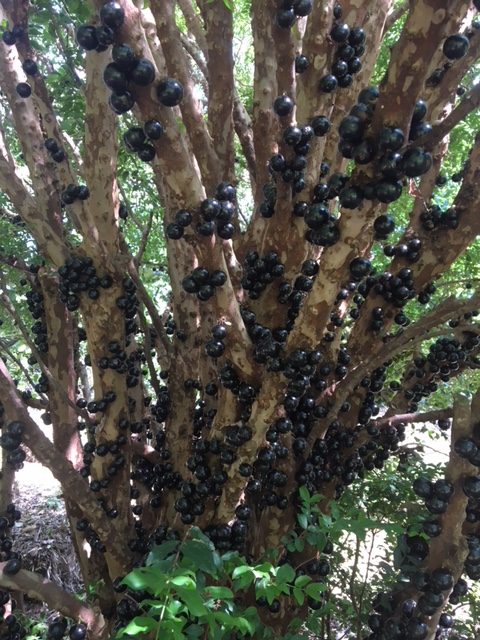
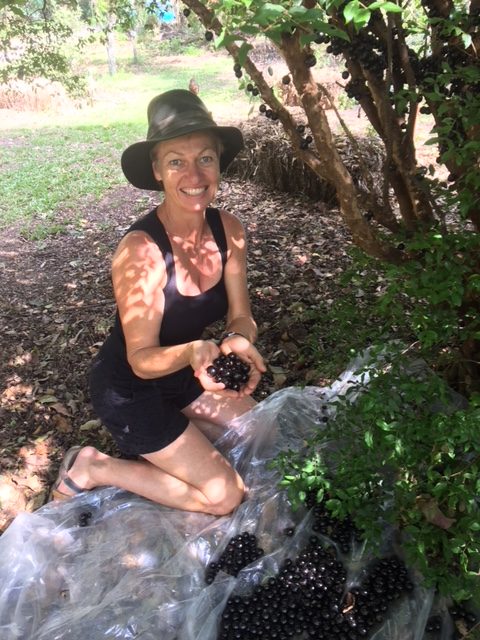
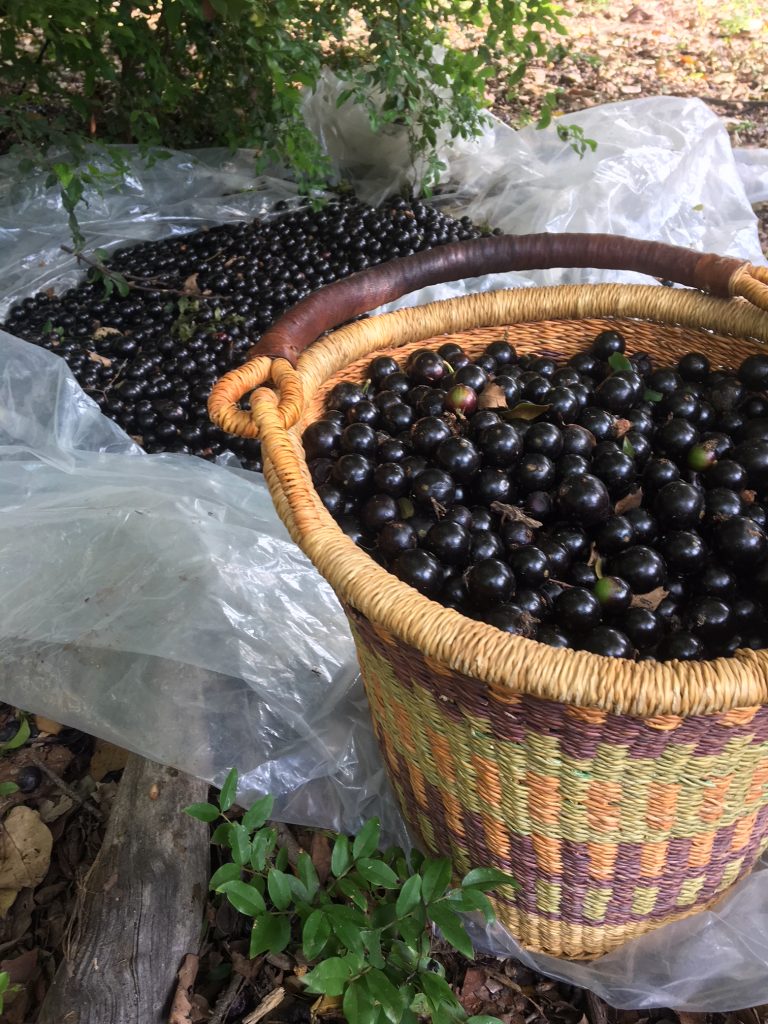
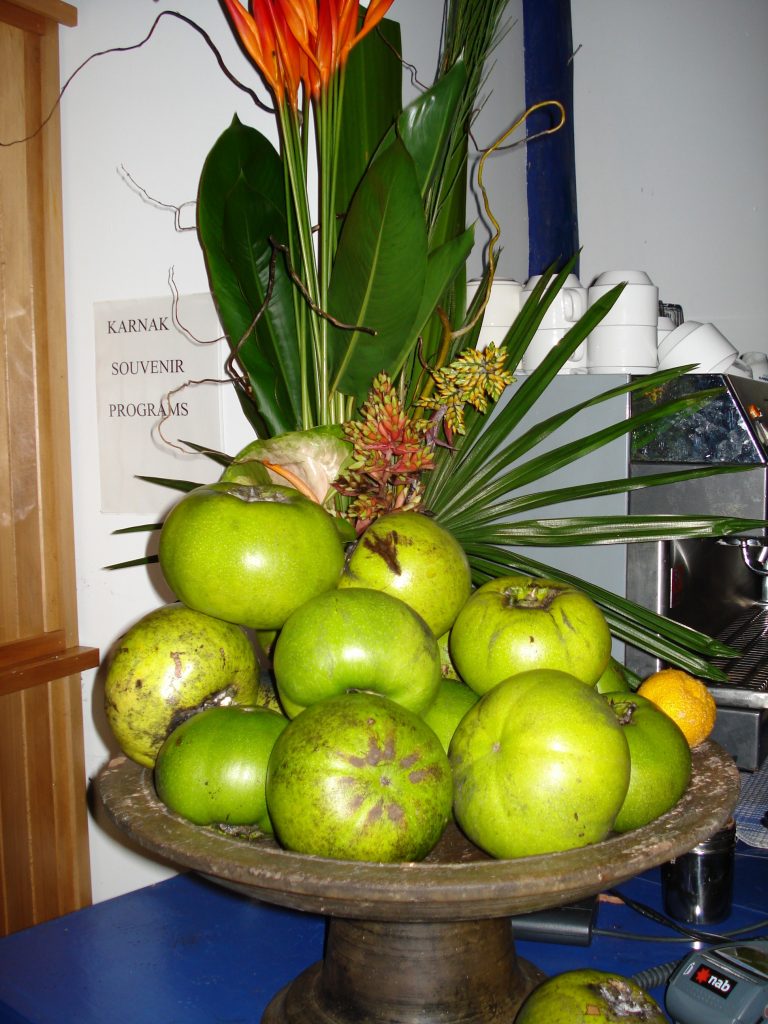
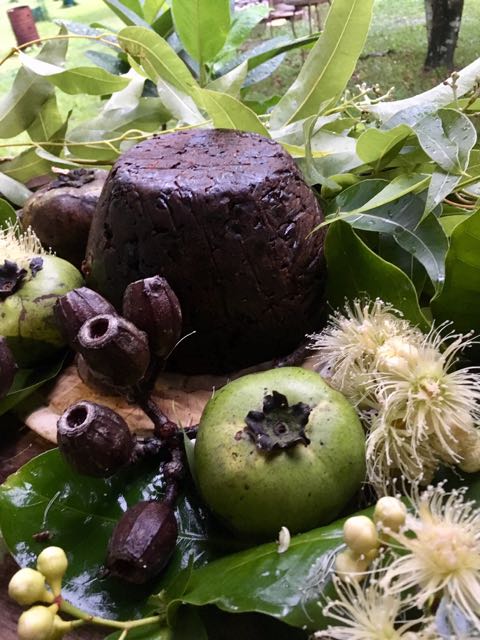
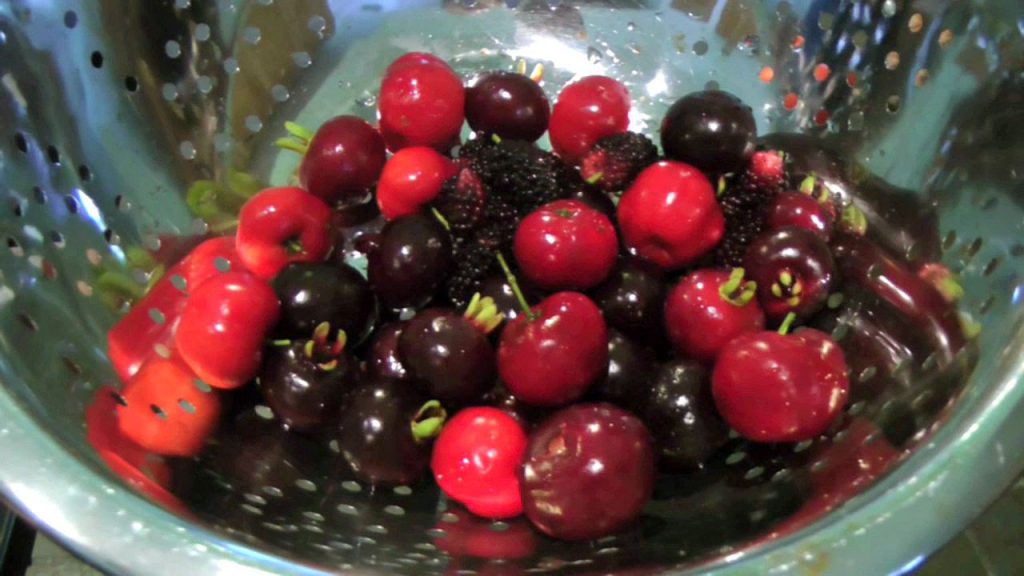
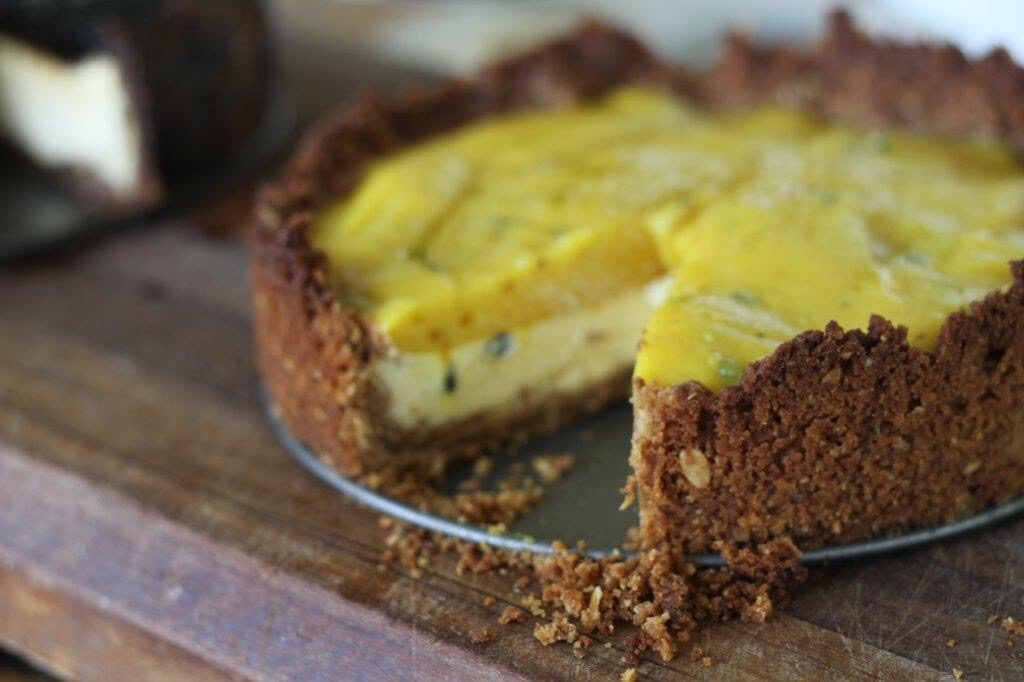
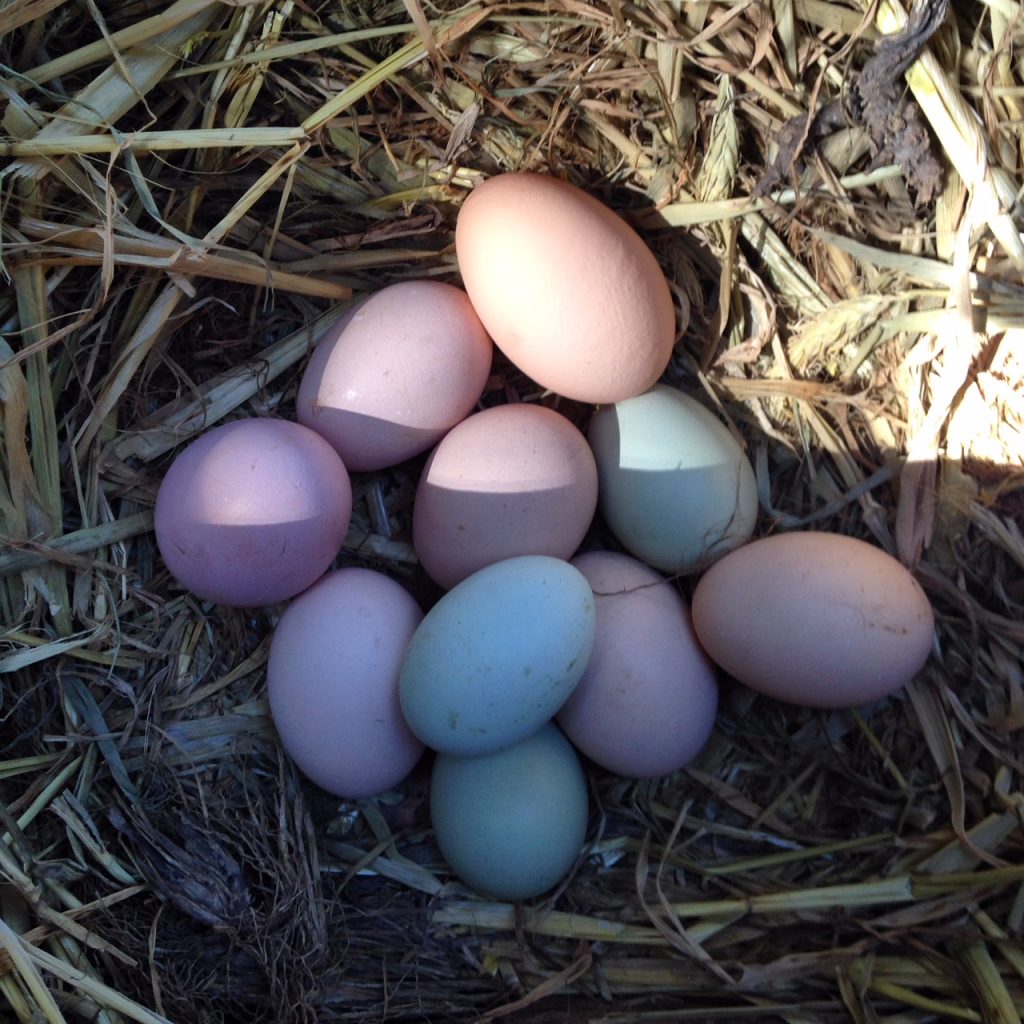
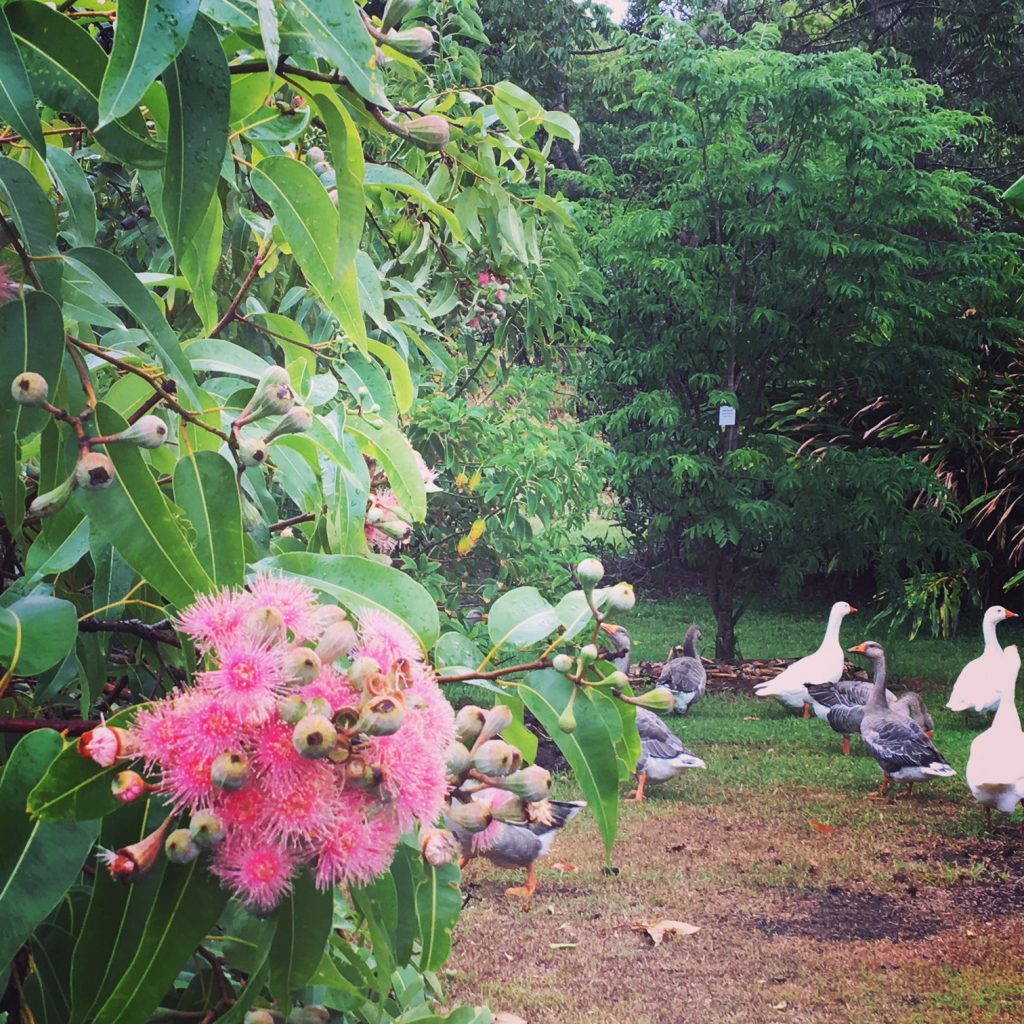
Hi sheridan
You are so clever! Such a beautifully written piece which captures so much of the Farm experience.
Justy
gorgeous article sheridan! jaboticabas do taste a bit like grapes with a tougher skin which is however very pleasant to eat! xmas phd looks fab!
Thanks Adrienne – you must come & visit us sometime 🙂
You’re pretty clever yourself, Justy!
Thanks Adrienne – you must come and pay us a visit 🙂
Hi Justy, Sheridan
what a wonderful time in the orchard and most bounty full. Justy’s cakes are very yummy too
Thanks Therese, and yes, Justy’s cakes are yummy
A lovely piece Sheridan. Such a beautiful farm.
Thanks Leila…sure is a patch of paradise